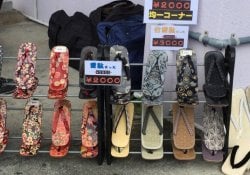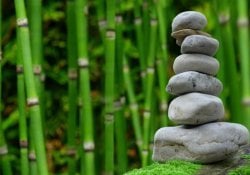How well are there Japanese Indians? Yes that's right. I confess that I didn't know that until then. Many tourists have not even heard of this one from the Ainu people. But its popularity increased after the Golden Kamuy Anime.
And they have physical characteristics similar to those of the Japanese, but with their particularities such as skin color, hair and others.
They have lost a lot of their characteristics due to the mixture in society and many do not say that they are descendants or belonging to the tribe for fear of the prejudice that still exists towards those considered different in some way.
There are an average of twenty-four thousand Ainu believed to live in Japanese territory. and unfortunately, due to various factors, these people are on the brink of extinction.
But how did these people come about and how are they today? Let's find that out and more now.
Índice de Conteúdo
History of the Ainu people
For the Ainu people, the natural environment was one of their kamuy 'gods', who gave them all the necessary plants and animals. Their various rituals, related to their coexistence with the environment, played an essential role in maintaining a proper ecological balance.
They are currently found in Hokkaido island. Unlike many Japanese ethnic groups that were predominant in the population since the last phase of the Ancient Age of Japan, settling in the Yayoi Periods and later in the Yamato Period with great cultural influences from Korea and Chinese, which goes from the 3rd century BC to the Age Modern.
Ainu means ''human''. These people inhabited Hokkaido, Skhalin which is currently a part of Russia. They were colonized by the Japanese in the Meiji period in the first half of the century.
Until today there are many uncertainties regarding these people, what little is known is that they were the first inhabitants of the northern region of Japan.
They are believed to have inhabited Hokkaiko since the Jomon period (14,500 to 300 BC). They can be a mixture of three different cultures: Jomon, Okhotsk and Satsumon.
Another hypothesis is that they may have links with Eurasia, Russia and the arctic region.
Origin of the Ainu
Some scholars have defended the Mongolian theory, the Mongols who lived further south of Mongolia and the Mongols who lived further north of Mongolia, after the Jomon period (more than 10,000 years ago) the Mongols who lived further south of Mongolia began to move around in search of better living conditions, migrating to the Japanese archipelago.
The Japanese began to arrive in Hokkaido at the beginning of the 15th century, but before starting the so-called organized colonization in the period (1868-Meiji 1912), there were already Ainu residing in the region.
Conflicts with the Ainu
In the fifteenth century Japanese sought out the Ainus in order to do business with the land, but this contact was not peaceful.
The Ainu people were oppressed and marginalized. There were battles between the two groups in the years 1457 and 1789. But in the year 1789 the Japanese conquered the Indians in the Battle of Kunasiri-Menasi.
This battle took place in Hokkaiko, the Ainu attacked the Japanese on the island of Kunashir. More than seventy Japanese were killed and thirty-seven Ainu also lost their lives during this turbulent period.
It is still unclear what led to this revolt, but some research points to suspicions of poisoned sake given to the Ainus at a loyalty ceremony, and other questionable behavior by Japanese merchants.
The Ainu people called the Japanese ''Wajin'' or ''Shamo'', this term originally from China means ''colonizer'' or ''people you can't trust''.
As Japan became popular, the Ainu people were increasingly restricted in terms of land and concentrated specifically on the island of Hokkaiko.
Religious Traditions of the Ainu
Like most peoples they had their religiosity turned to the worship of gods with reference to things in nature. They revered wolves, bears, gods of water, fire and wind.
But in their religious beliefs there are three deities they consider especially important: the god of bears and mountains (Kim-um Kamuy); the goddess of the fireplace (Kamuy Fuchi) and the god of the sea, fishing and animals (RepunKamuy).
As for them the human being is not considered a superior dominant species, whatever they take from nature they thank these gods.
The fire in the fireplace was like a portal to the spirit world. and the goddess Kamuy had the job of protecting the house and putting souls in the newborn babies.
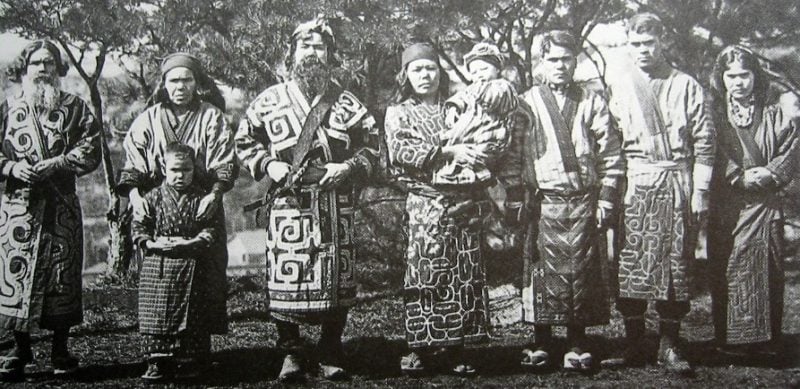
The article is still halfway through, but we recommend also reading:
Cultural aspects of the Ainu
The Ainu people live off fishing and hunting, this similarity is the same with the rest of the Japanese.
In order to be able to hunt wild animals they developed a poison that covered the tips of the spear and arrows. The poison used was surku, which came from aconite plants and was then fermented.
The food preservation methods they do is basically smoke and dry and they do that a lot with salmon. Ainu men follow the custom of not shaving when they get older.
the ainus women did a tattoo in the mouth, hands and forearms. This custom is no longer done, but they use a temporary ink.
The villages (kotan) they lived in were small houses (4m wide and 6m long), with only one or two rooms. This place was called a chise. Each village had a chief.
One of the most important ceremonies for the Ainus is the lomante, which consists of sacrificing wild animals for their spirits to be sent to the world of the gods.
Interestingly, when babies are born they are given provisional names. The real name is only given around the age of three.
The choice of name will be according to the child's personality. This happens to scare away evil spirits so as not to attract bad things to the child.
Children's names are ugly and usually scrotum on purpose. Some examples of temporary names are ''ayay'' (children's cry); ''poyshi'' (small droppings); ''shion'' (old excrement).
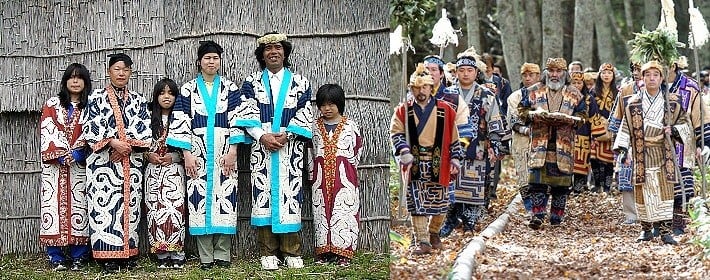
the Ainu people today
These indigenous people felt obliged to abandon many of their characteristics and traditions in order to be accepted.
The practiced language was considered by UNESCO as an endangered language, as there are only very few speakers of the original language.
The situation began to change with regard to them in 2019, when they were legally recognized as indigenous peoples of Japan.
Before, many were not even aware of their existence and today it is already possible for tourists to visit villages to show a little of the Ainu culture through the Center for the Promotion of Ainu Culture.
Now whoever is interested can learn a little about the history of these people who are important to Japanese culture.
But this village has no inhabitants, it is just a replica to bring tourists and Japanese closer to this part of history.
The Ainu Indians had already begun to receive recognition through activist Shigeru Kayano, elected to the Japanese Parliament in 1994.
Shigeru Kayano was the first Ainu to join the Diet (parliament) this step was of great significance. and he was considered one of the most important and significant voices of the Ainu people.
Another complex to learn more about these people was planned to be inaugurated for the 2020 Olympics, as these events usually receive many tourists.
But due to the pandemic of COVID-19 that goal has been postponed. There is still a huge path to be traced for the greater appreciation of these people in all its aspects.
This all contributed in a positive way, as many decided to relearn their native language.
Golden Kamuy - An anime about the Ainu
Golden Kamuy is a very good and fun anime that details the Ainu people and their history in the last century involving the battle between Japan and Russia.
The anime tells the story of Sugimoto, an ex-soldier who searches for a treasure of a legend where a certain Noppera-bo (faceless man) tattooed the map on several prisoners who escaped from Abashiri prison. The main character meets a girl from the Ainu tribe named Ashiripa who helps on this long journey.
In this anime it is possible to see its culture, life and customs up close. In addition to the anime that already has more than two seasons, we have the manga available in your language:
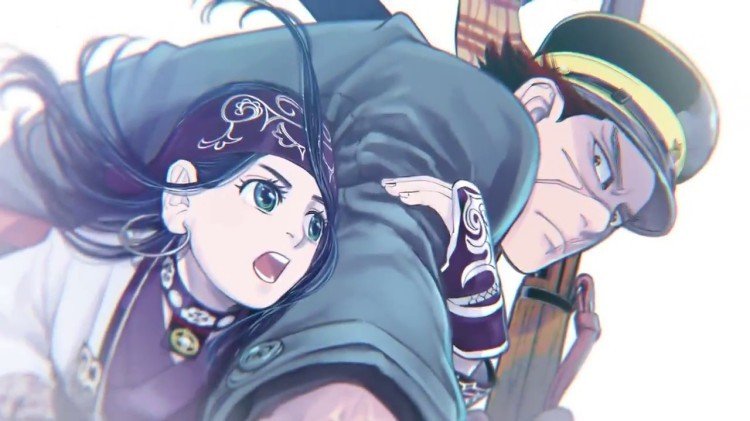
ainu in the current world
Discrimination against the Ainu still persists today, and this has become a characteristic social problem within Japan. Criteria were created to distinguish between the Ainu and the Japanese, and this resulted in discrimination against them.
The ainu serve "Kamuy", who are their gods. Their daily guidelines plus basic needs consist of organizing prayers and ceremonies for these gods. The Ainu believe in many gods, almost everything around them is considered a god.
There are gods of nature: as of fire, water, wind and thunder; animal gods: such as bears, foxes, owls and orcas; gods plants, objects, protection and so on. The word “ainu” means the opposite of these gods.

He believes that the population is decreasing a lot, be it the Language, the Culture and even the Recognition. According to a survey, there are more than 20,000 Ainu located in Hokkaido.
- Many people say: Wow, you're Indian and not Japanese;
Friends, Japanese people are not all the same, and you know that very well. This message goes to those who are very basic thinking. So let's research, study and understand more about Japan's culture and diversity.
This has been updated by Sabrina, with some parts written by Leonardo Sadao. The parts written by Leonardo refer to the origin of the Ainu and the Conclusion of the text.

